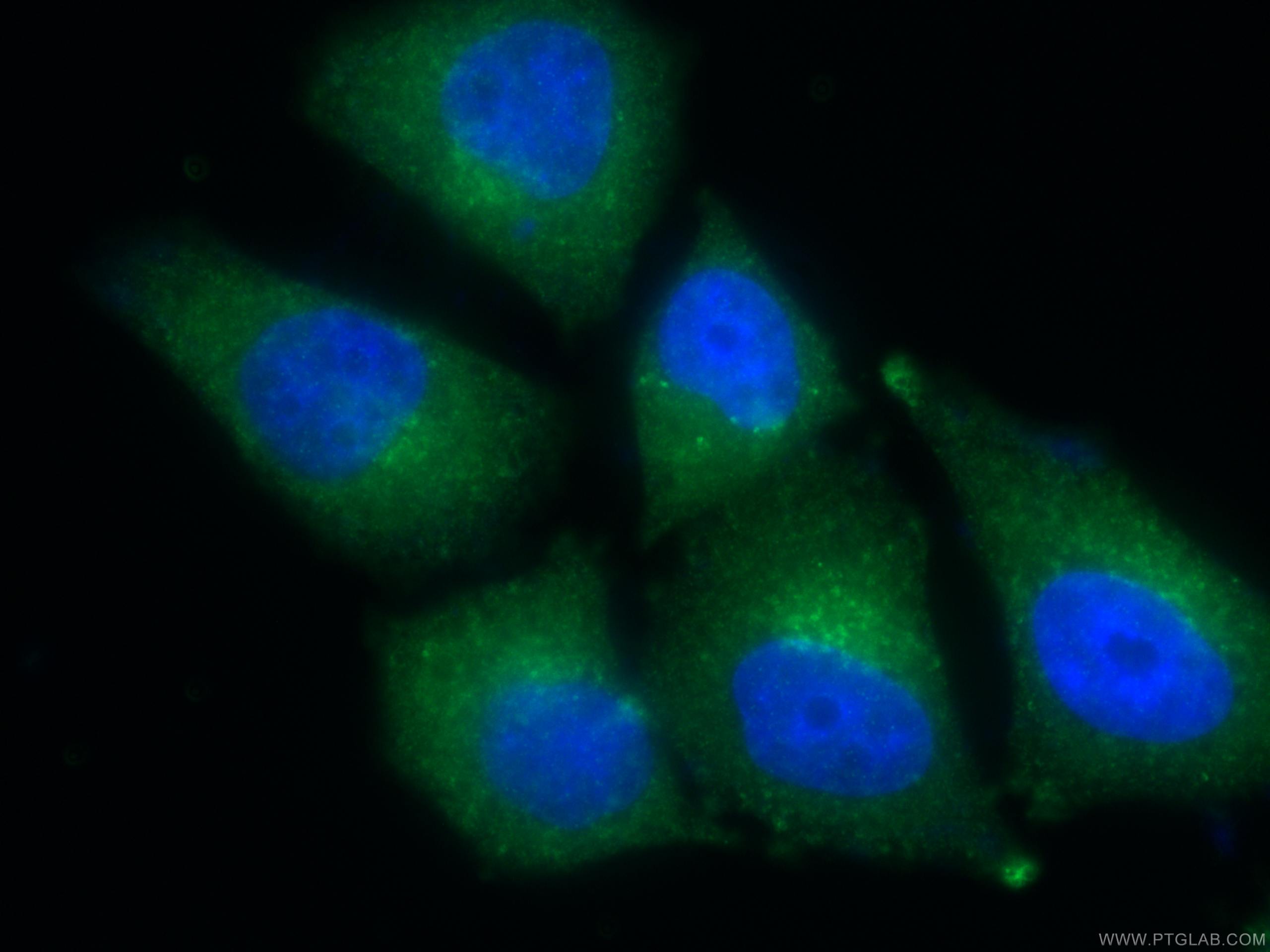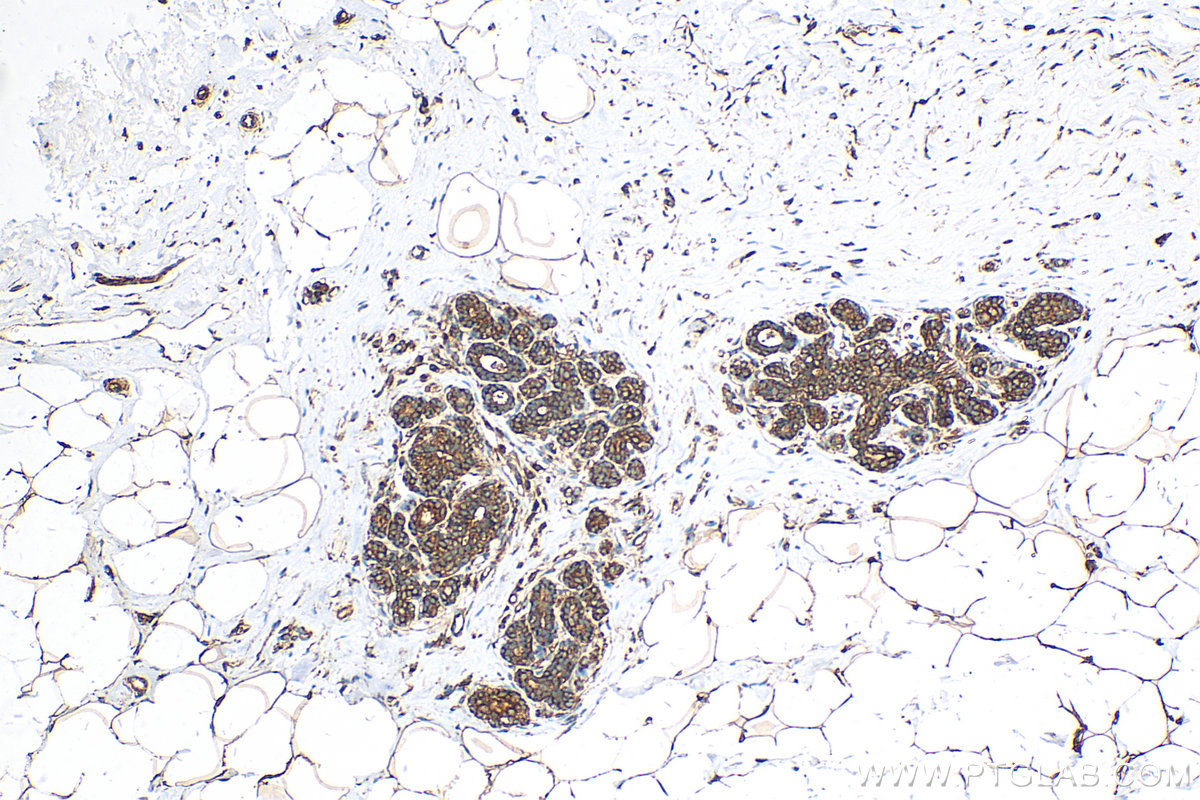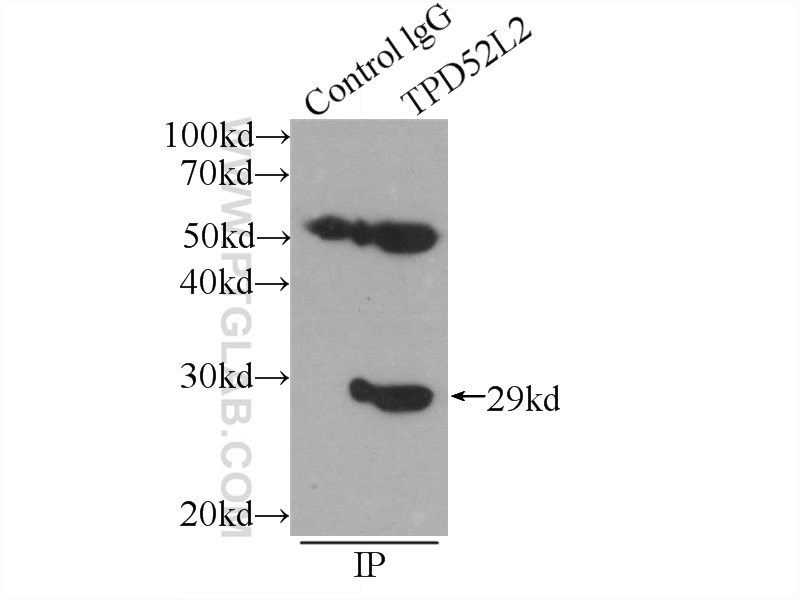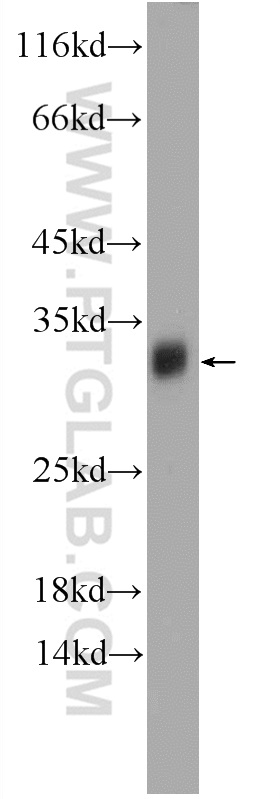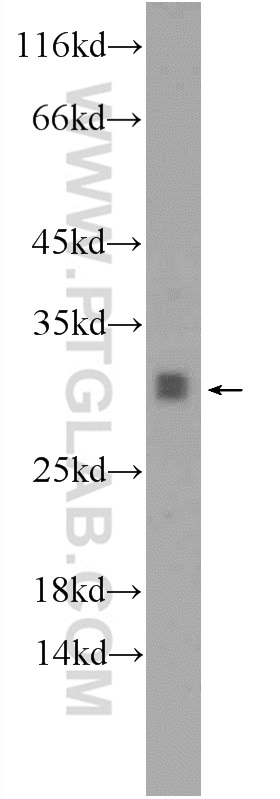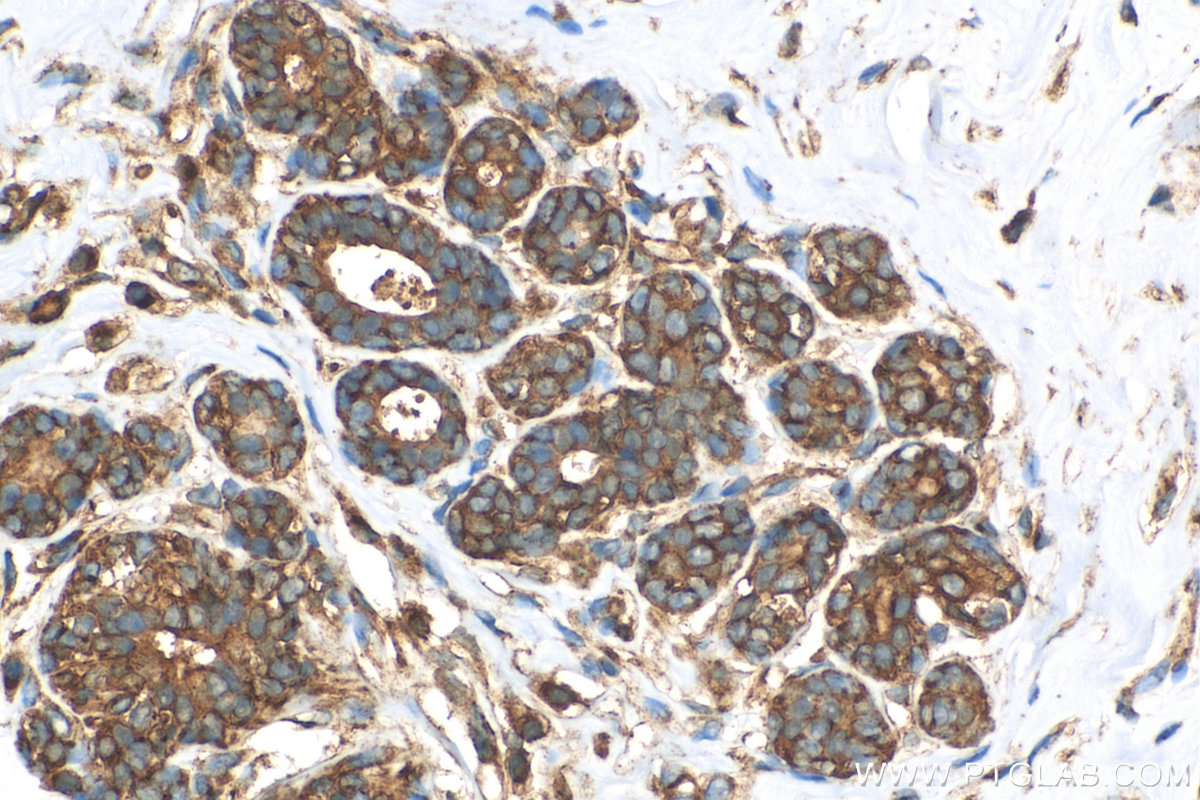验证数据展示
经过测试的应用
| Positive WB detected in | HEK-293 cells, mouse brain tissue, rat brain tissue, MCF-7 cells |
| Positive IP detected in | HEK-293 cells |
| Positive IHC detected in | human breast cancer tissue Note: suggested antigen retrieval with TE buffer pH 9.0; (*) Alternatively, antigen retrieval may be performed with citrate buffer pH 6.0 |
| Positive IF/ICC detected in | HepG2 cells |
推荐稀释比
| 应用 | 推荐稀释比 |
|---|---|
| Western Blot (WB) | WB : 1:500-1:1000 |
| Immunoprecipitation (IP) | IP : 0.5-4.0 ug for 1.0-3.0 mg of total protein lysate |
| Immunohistochemistry (IHC) | IHC : 1:50-1:500 |
| Immunofluorescence (IF)/ICC | IF/ICC : 1:50-1:500 |
| It is recommended that this reagent should be titrated in each testing system to obtain optimal results. | |
| Sample-dependent, Check data in validation data gallery. | |
产品信息
11795-1-AP targets TPD52L2 in WB, IHC, IF/ICC, IP, ELISA applications and shows reactivity with human, mouse, rat samples.
| 经测试应用 | WB, IHC, IF/ICC, IP, ELISA Application Description |
| 文献引用应用 | WB, IHC, IF, IP |
| 经测试反应性 | human, mouse, rat |
| 文献引用反应性 | human, mouse |
| 免疫原 | TPD52L2 fusion protein Ag2364 种属同源性预测 |
| 宿主/亚型 | Rabbit / IgG |
| 抗体类别 | Polyclonal |
| 产品类型 | Antibody |
| 全称 | tumor protein D52-like 2 |
| 别名 | TPD54, Tumor protein D52-like 2 |
| 计算分子量 | 206 aa, 22 kDa |
| 观测分子量 | 25-30 kDa |
| GenBank蛋白编号 | BC006804 |
| 基因名称 | TPD52L2 |
| Gene ID (NCBI) | 7165 |
| RRID | AB_2207431 |
| 偶联类型 | Unconjugated |
| 形式 | Liquid |
| 纯化方式 | Antigen affinity purification |
| UNIPROT ID | O43399 |
| 储存缓冲液 | PBS with 0.02% sodium azide and 50% glycerol , pH 7.3 |
| 储存条件 | Store at -20°C. Stable for one year after shipment. Aliquoting is unnecessary for -20oC storage. |
背景介绍
Tumor protein D52-like proteins (TPD52) are small coiled-coil motif bearing proteins that were first identified in breast carcinoma. Three human TPD52 members had been identified, named hD52 (TPD52), hD53 (TPD52L1), and hD54 (TPD52L2). The most important characteristic of the protein family is a highly conserved coiled-coil motif that is required for homo- and heteromeric interaction with other TPD52-like proteins. TPD52 and related proteins have been implicated in cell proliferation, apoptosis, and vesicle trafficking. TPD52L2 has five isoforms produced by alternative splicing, and its multiple sites have been identified to be phosphorylated. Interaction of TPD52L2 with MAL2, a novel member of the MAL proteolipid family, may be required for the role of TPD52L2 in vesicle transport.
实验方案
| Product Specific Protocols | |
|---|---|
| WB protocol for TPD52L2 antibody 11795-1-AP | Download protocol |
| IHC protocol for TPD52L2 antibody 11795-1-AP | Download protocol |
| IF protocol for TPD52L2 antibody 11795-1-AP | Download protocol |
| IP protocol for TPD52L2 antibody 11795-1-AP | Download protocol |
| Standard Protocols | |
|---|---|
| Click here to view our Standard Protocols |
发表文章
| Species | Application | Title |
|---|---|---|
Carcinogenesis TPD52L2 impacts proliferation, invasiveness and apoptosis of glioblastoma cells via modulation of wnt/β-catenin/snail signaling.
| ||
Cell Biosci Tumor protein D52 is upregulated in oral squamous carcinoma cells under hypoxia in a hypoxia-inducible-factor-independent manner and is involved in cell death resistance. | ||
J Biol Chem Tumor protein D54 binds intracellular nanovesicles via an extended amphipathic region. | ||
Int J Oncol Opposite effects of tumor protein D (TPD) 52 and TPD54 on oral squamous cell carcinoma cells. | ||
Biomed Res Int Tumor Proteins D52 and D54 Have Opposite Effects on the Terminal Differentiation of Chondrocytes. | ||
Neoplasma Silencing of TPD52 inhibits proliferation, migration, invasion but induces apoptosis of pancreatic cancer cells by deactivating Akt pathway.
|

